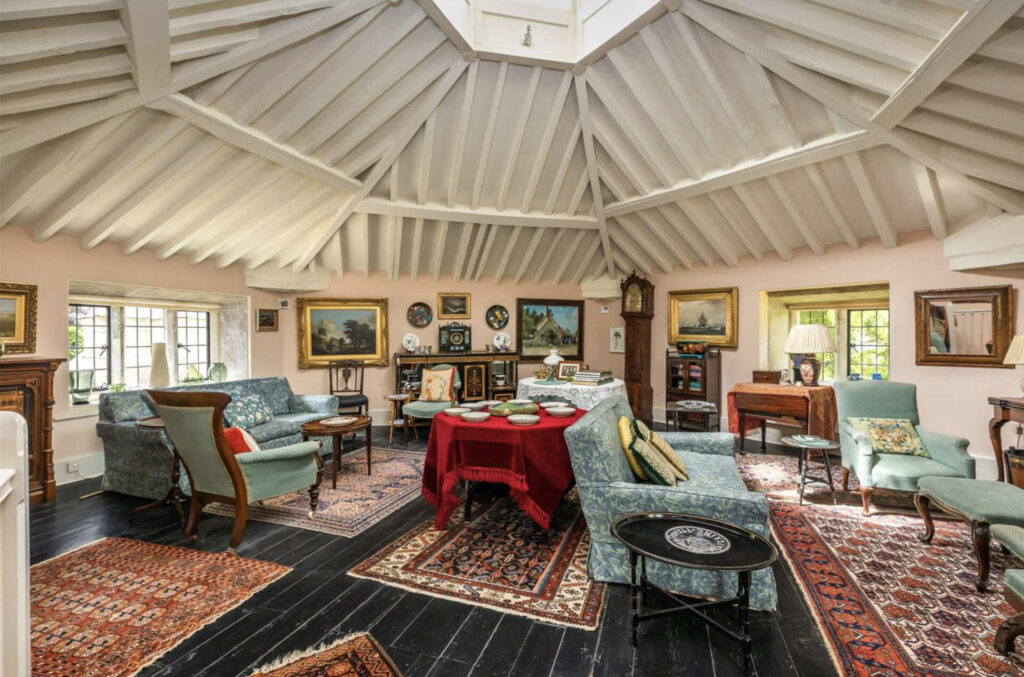Natalie Aldrich, senior heritage and archaeology consultant at Savills, looks at some common beliefs and misconceptions around owning a listed building

Currently for sale through Savills
According to Historic England, there are around 400,000 Grade I, Grade II and Grade II*-listed buildings in England. A building is listed when it is of special architectural or historic interest considered to be of national importance and therefore worth protecting. The older the building, the more likely it is to be listed. So what does this mean for those who live in one?
I can’t make any changes!
This is a common misconception. You may well be able to undertake partial demolition, add an extension, or make many other changes. However, the significance, of the building should be understood and the right permissions obtained.
In understanding which elements of the building are of most architectural, historic or archaeological interest, it is then possible to understand how any proposed development may impact this. For example, if you have a listed 18th- century cottage which includes a 20th-century extension, by illustrating that the extension adds no special heritage interest, you are more likely to obtain permission to demolish it.
Equally, it is possible to make internal alterations. Some may need Listed Building Consent (LBC), which must be sought from your local planning authority, while others may not. Upgrading kitchens and bathrooms can often be done without needing consent so long as there aren’t significant changes to the services (plumbing, for example).
In England, Historic England provides guidance on what does – and does not – need LBC, so having a good relationship with your local conservation officer can be beneficial.
Only the exterior is covered by the listing, so I can do what I want inside!
This is not true. The statutory listing of a building covers the whole building – internally and externally (unless parts are specifically excluded in the list description). The listing can also cover attached structures and fixtures, later extensions or additions, or buildings which pre-date 1948 which are located within land attached to the building which may not be explicitly described in the list entry. This is sometimes referred to as ‘curtilage listing’. Most listings provide a description of the building. Nevertheless just because an element of the building is not mentioned does not mean it is not covered.
Can I knock down walls?
Possibly. Again, understanding the history and development of the building, including how the internal layout and form may contribute to the heritage interest, is key in whether you may be allowed to alter the internal fabric/form.
If an internal partition is modern it may be possible to remove it, especially in cases where this would reveal the original proportions of the space. For example, the principal rooms of an 18th-century townhouse were at first-floor level, larger with high ceilings. Where more recent subdivision has occurred, it may be possible to reverse this and reinstate the intended floorplan.

Am I allowed double glazing?
It will depend on what is currently installed, where the heritage interest lies and what sort of windows are proposed. Traditionally, double glazing in listed buildings has not been encouraged by local planning authorities, who prefer secondary glazing which does not require changes to the fabric of the building. It is possible to install energy efficient windows which respect the appearance and style of the original and, therefore, would not affect the understanding of the building.
Can I paint the front door?
There is no general rule to say you can’t! There are circumstances where you may need to obtain LBC – for example, if the door is original and its appearance or fabric is important in explaining its special interest. Also, if you live in a Conservation Area and wish to paint your front door a different colour, you should speak to your local planning authority to see if you need planning permission and/or listed building consent.
Can I build a new structure or building in the grounds?
Yes. You may be able to erect a new building or structure in the grounds of your listed building without needing LBC. You may, however, need to obtain planning permission. If permission is required, consideration will be given to how the proposal may impact the significance of the listed building in terms of its setting, and therefore careful thought regarding the scale, design, use of materials and location of a new structure in the design stage may be beneficial.
Can I be made to maintain my listed building?
There is no direct legal obligation or specific duty on owners to keep their buildings in a good state of repair, but local authorities have powers to take action where a listed building has deteriorated to the extent that its preservation may be at risk. The local authority can issue an Urgent Works Notice for the preservation of the building after giving notice to the owner. This only applies to an unoccupied building, or unused part of a partly occupied building, and generally only relates to works to ensure the building is weathertight, safe from collapse or to prevent vandalism or theft.
If the works are not carried out by the owner, the authority has the power to enter the property, carry out the works and seek to recover the costs from the owner. A Repairs Notice may be served where it is considered that the building is not being properly preserved. These powers are not confined to urgent works or to unoccupied buildings and can be used where it is deemed an owner is not keeping the building in reasonable repair which may put the building at risk.
If it is deemed that reasonable steps are not being taken by the owner to preserve the building, then the local authority may begin compulsory purchase proceedings. Be aware that should the local authority intervene in such cases, you may be liable for costs including the costs of works required to return it to a preserved state.
Can I get financial help to maintain my listed building?
It may be possible to apply for financial support to help maintain your building. Historic England may provide grants, however these tend to be for buildings of greatest national significance and where some degree of public access is provided. Other sources of funding may be available, but again these sources have criteria for access.
Can I appeal against the listing?
Yes, it is possible to question or challenge the designation of your listed building. This can happen both when a listing is proposed, and when a building is already listed. You can apply to Historic England to review the previous assessment, however you would need to provide evidence as to why the building does not meet the statutory criteria for inclusion, which may be based on information not considered at the time of listing. This may be because new evidence has come to light, for example regarding the architect of the building, the age or origins of internal fabric, or loss of fabric following accidental damage.



